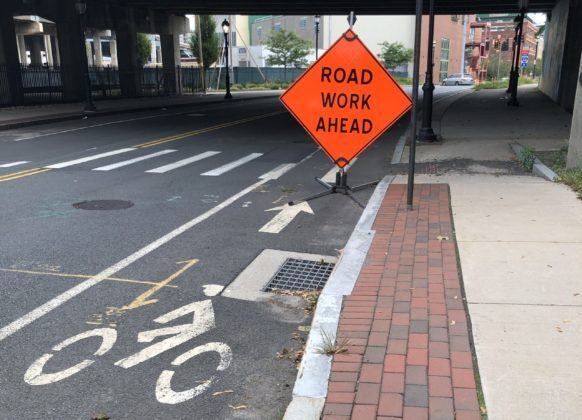When people choose their wallets over public health, we should be laughing them out of the room.
But we should also be asking about the dollar amount that they are claiming will bankrupt the middle class.
Before we get to the precise sum that is stalling the TCI program, we should look at what it costs, on average, to rely on different modes of transportation in Connecticut.
You can make all of these more expensive, but each table represents a standard cost without going for especially flashy accessories.
Let’s start with my preferred mode, walking.

Could you spend $900 on Gucci sneakers with rainbow stars? Sure. But you can get perfectly normal-looking and comfortable sneakers that can last you a year, easily, for much less. Even if you burn through more socks, you are unlikely to go over $100 per year.
Let’s say you live more than two miles from where you work or go to school, or want to carry groceries more easily, or just like zooming around because it’s fun. If you have no bike and need to start fresh, your annual spending will be, at most, around $1000, assuming you are choosing a quality commuter bike, rather than a specialized racing bike. Unless you lose any of bike accessories (lights, helmet, lock), most of these costs are one-time. After that first year, you’re likely only going to need to shell out for the tune-up…so, first year is around $1000, and then after, around $150.
It is also easier to learn how to maintain a bicycle than to maintain a car, and it’s possible to scale those costs back if you are someone who doesn’t mind getting a little greasy.
Want an electric bicycle? You’re talking about $1,300 per year, total.

Cycling or walking everywhere might not be for you. Maybe you need to combine modes, like putting a bike on a bus because public transit stops before your work shift ends. For regular bus users who are only traveling in the local area, the cost is completely predictable. The ride gets more expensive for those using Express buses, but that’s not most commuters.
 What about if you are commuting from Hartford to New Haven? Regular train riders would get a monthly pass, coming to just over $2000 per year. Like the bus, the rate is predictable. It may change at some point, but it does not flucutate every few days or by travel season.
What about if you are commuting from Hartford to New Haven? Regular train riders would get a monthly pass, coming to just over $2000 per year. Like the bus, the rate is predictable. It may change at some point, but it does not flucutate every few days or by travel season.
As with the bus, any maintenance that the train requires is not the responsibility of the passenger. No special license is needed to walk, bike, or ride the bus or train. Riding the bus and train, you need only minimal alertness — enough to get off when it’s your stop; otherwise, you can watch videos or send texts or read books, and being distracted causes no harm to anyone else.

All of those modes are considered green, even when buses could stand to be improved by conversion from diesel fuel to electric. These are the modes used by workers, by parents dropping their children off at school, by people running errands.
Let’s say that instead of active transportation or public transportation, you have opted for a private motor vehicle, fueled by gasoline. Using the current averages for Connecticut, this is what you should expect to shell out for a completely average vehicle:

This does not reflect the true cost of driving, as there are hidden costs like “free parking” where the cost is passed on through more expensive menu items. It does not reflect the health costs that come with a sedentary lifestyle.
These are also averages. You can bring this cost down by choosing a smaller vehicle or going for something used, but $550 is the current average monthly car payment for Connecticut residents, and this seems to be the area to fuss over. Between the personal car and the mortgage/rent, how do people have money left over at the end of the month for anything else?
A person making $15 per hour will need to work 780 hours to pay for just that car. If that person works 35 hours per week, this means 22 out of 52 weeks are spent at work entirely for this vehicle. The next most expensive option — the train — only amounts to about four weeks worth of work.

If you’re a bus rider, you can stop for avocado toast at HBC every weekday and still come out nearly $9000 ahead of someone who has chosen to incur the costs of owning a private vehicle.
All of this is to point out that I am over here with the world’s tiniest violin when I hear crying about how the Transportation and Climate Initiative Program will allegedly destroy Connecticut’s middle class by adding costs at the pump.
What is this increase at the pumps that the middle class simply cannot afford?
Dr. Mary Donegan has it broken down for you. She figured out that if TCI-P were signed into law, the gas price increase would be capped at $0.05 per gallon during the first year. The average driver who travels 13,500 each year using a vehicle averaging 25 miles to the gallon would be absolutely gutted by spending an extra. . . $27 per year.
Wipe your eyes.
That’s the amount that would cause undue suffering to the middle class: $27 per year.
This is the equivalent of raging about needing to buy a new smoke detector every year for your house. Seriously. That’s the price equivalent.
Over ten years, that surcharge could go to $0.10 per gallon.
It’s still not even close to becoming a financial burden, or, if it is, one might reconsider having what already cost, before TCI, around $12,000 every year. Luckily, there are other options.
Those feigning concern over what low income and working class people can afford might want to get real with themselves and fight the car manufacturers or insurance companies instead — that’s what costs consumers the most. In the meantime, they could advocate for free public transit and rebates for electric bicycles, and just support TCI-P in general.



Chris D
Wait what?!?!? Look I knew the whole crying about the gAs TaX was bs but I did not realize it was TWENTY SEVEN DOLLARS A YEAR bs. S. M. H. Even at double that, we’re talking peanuts, yes, even for the lower class who still own cars – sure every dollar counts, but you are so right that the anti-TCI concern for the lower and middle class wallets (though oddly I only ever hear about the plight of the middle class…?) is grossly disingenuous, even if one cannot fathom anything else existing in the world besides car ownership.